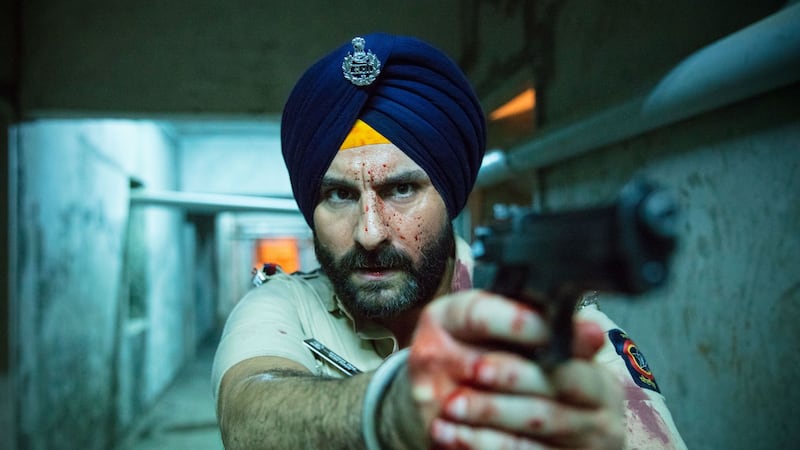With a little help from friends Jennifer Aniston and Jason Momoa, Apple TV+ launched in more than 100 countries on Friday. For Apple this is a hardware game. Unlike global streaming leaders Netflix and challengers led by Disney, its motivation for diving into content is to shift more devices. But on one key front – a particular eastern one – Apple has much in common with its fellow streamers.
Without wishing to shock anyone who imagined otherwise, Apple isn't likely to be too concerned about whether Apple TV+ yields glorious results in Ireland. The market it will have its sharpest eye on outside the US is the one where, as consultants at EY put it, there's "a billion screens of opportunity".
In India, Apple TV+ costs 99 rupees (about €1.26) a month. Unsurprisingly, this is a lower price point than the US one ($4.99) or Irish one (€4.99). It's also cheaper than the mobile-only plan introduced by Netflix this summer.
With its slender debut library, Apple TV+ shouldn’t cost more that its competition anywhere anyway. But in India, its chosen price exemplifies just how keen it is to capture the attention of more than 500 million internet users in a market where they know price sensitivity is incredibly high.
Just ask Netflix. When Netflix launched in the US and Europe, it was able to undercut the prices of traditional cable or satellite pay-TV packages. It couldn't quite repeat that trick in India, where, as it has reminded its shareholders, the average revenue per user (ARPU) in the pay-TV market is below $5 a month.
Among all the US streamers, Netflix has been bluntest about what it hopes to gain from India, with chief executive Reed Hastings telling a conference in New Delhi that its "next 100 million" subscribers would come from there.
But as of this summer, it had built up only a fraction of that, with Indian viewers instead flocking to a freemium service called Hotstar that has the distinction of offering live cricket. While the majority of Hotstar's users watch ad-supported content for free, its paid subscribers are still estimated to exceed those of both Amazon Prime Video and Netflix.
Disney ambitions
This is a familiar nemesis. Hotstar, the streaming service of Star India, is now owned by Disney, having become a nice prize for the company when it acquired various bits of Rupert Murdoch’s 21st Century Fox. Disney is warming up to launch Disney+ around the world, but in India, its ambitions are all about Hotstar.

Netflix’s first set of Indian plans, available since 2016, started at 500 rupees (€6.34) a month. Since July it has been offering a 199-rupees-a-month plan with usage restricted to a single mobile or tablet – users in India watched more on mobiles than anywhere else in the world, Netflix explained. In its most recent shareholder letter, it assured that it was “pleased with the results” so far.
The pricing adjustment coincides with its stepped-up investment in original content: Mumbai-set thriller Sacred Games, Netflix’s first original series from India, scripted primarily in Hindi, returned this year for its second series, having generated some political controversy with its first in 2018.
With two out of every three viewers of the much subtitled, much dubbed series coming from outside India, last year was the year “Indian content went global, finally”, according to EY, which highlights the positive spin-off effects it will have on the Indian film and television production industry.
The US video streamers are not the only ones in on the action. India has also been a major focal point in 2019 for Swedish-founded audio platform Spotify, which says it signed up a million users there in its first week after launching in February. Spotify told its shareholders it had outperformed its own forecast by 30 per cent in the third quarter, with momentum boosted by its first marketing campaign.
Tiger of Wall Street
It would not be a wild prediction to say that India, though eyed closely for some years now, is only going to be mentioned more frequently in the earnings statements and shareholder letters of the media-tech giants. Talking up their prospects for India and other emerging markets will help keep their shareholders’ faith in their growth trajectory – for now.
But just how solid is India as a potential source of Wall Street gold? The risk is that an unsuccessful campaign in an attractive-on-paper market of its scale could become a nasty domino for one or more of the companies depending a little too hard on its rupees to make investors happy.
It’s not as if there haven’t been hiccups so far. Just ask Amazon, which earlier this year was obliged to adjust how it does ecommerce in India after new laws on foreign investment were introduced to protect domestic retailers – the rise of protectionism remains a critical source of tension involving all kinds of ambassadorial interventions.
Fears have also surfaced that the censorship that applies to Indian film and television could be applied to international video streamers. Then there's the fact that there are 23 official languages in India: Hindi content alone may not cut it. And in the related market of telecoms, a debt-amassing misadventure for Vodafone in India is something of a cautionary tale.
None of this is likely to deter the media-tech players betting that India will deliver their “next 100 million”. Apple TV+ is only the latest to enter the crowded fray in the confidence that India, and its imminent wave of 5G connections, will be worth it.











